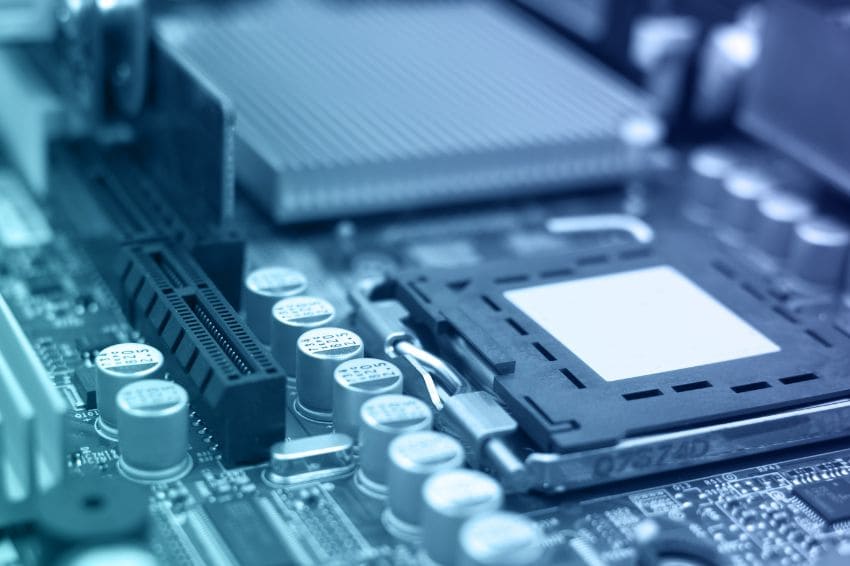Printed circuit boards (PCBs) rely heavily on Power Delivery Networks (PDNs) for both performance and design. The need for effective and dependable power distribution has never been greater as electronic gadgets get more complicated and demanding. This article explores the complexities of PDNs and their significance in PCB hardware design, hardware designers’ issues, and performance optimization solutions. They will look at how PDNs affect different parts of electronic systems, such as temperature control and signal integrity, and we will talk about the newest developments in PDN design for contemporary PCB applications.
Knowledge of Power Delivery Networks
A Power Delivery Network’s primary function is to provide power from the source to every PCB component. The higher the circuit density and stricter power restrictions are, the more difficult this seemingly straightforward operation becomes. Every component on the board will operate steadily because a well-designed PDN makes sure that it receives the proper voltage and current.
In the PDN, power planes, decoupling capacitors, vias, and traces are all included. Each of these parts is essential to controlling noise reduction, power distribution, and overall system stability. While decoupling capacitors assist reduce high-frequency noise and voltage fluctuations, power planes offer a low-impedance channel for current flow. Connectors between layers and components, traces, and vias affect the performance of the PDN due to their intrinsic inductance and resistance.
VLSI design in USA is an ultra-modern discipline specialising in the design of complicated circuits. The American engineer is actively involved in the creation of new generation chip architecture, driven by sophisticated technologies in selecting appropriate tools and friendly techniques that would facilitate the design of powerful, high-performance semiconductor for different fields.
Methods for Optimizing PDNs
Hardware designers utilize an array of tactics and methods to overcome these obstacles and enhance PDN performance. One crucial tactic is to arrange and route components carefully.. Designers can lower voltage drops and boost overall efficiency by carefully placing components that consume a lot of power and decreasing the distance between power sources and loads.
Multi-layer PCBs are being used in PDN design more and more. Designers are able to improve noise isolation and offer low-impedance paths for current flow by dedicating entire layers to ground planes and power. Compact and effective designs are made possible by this method’s increased flexibility in power and signal routing.
The placement and choice of decoupling capacitors are critical to PDN optimization. By meeting sudden current demands and absorbing high-frequency noise, these capacitors serve as local energy reservoirs. Electromagnetic emissions can be greatly reduced and PDN performance greatly enhanced by carefully placing capacitors close to components that use a lot of power.
More Complex PDN Design Methods
As PDN needs rise, hardware designers are resorting to more sophisticated methods to achieve ever-higher performance levels. The utilization of embedded capacitance and inductance within the PCB stack-up is one such method. Designers can reduce the requirement for discrete decoupling components and enhance high-frequency performance by introducing thin dielectric materials between the power and ground planes. This creates dispersed capacitance throughout the board.
Using power domains and islands is another cutting-edge tactic. This method entails dividing the PDN into discrete areas, each with a unique power allocation plan. Designers can lessen electromagnetic interference and enhance signal integrity by separating delicate analog circuitry from noisy digital components.
Analysis and Simulation in PDN Design
The usage of sophisticated modeling and analysis tools is required due to the complexity of modern PDNs. Designers can uncover potential problems before the PCB is created by using these tools to predict the behavior of the PDN under different operating situations.
With the ability to visualize and optimize current flows, locate areas of high current density, and reduce potential electromagnetic interference (EMI), electromagnetic field solvers have become essential tools in PDN design. Hardware solution for engineers can reduce the requirement for expensive prototype changes by using these potent software tools to iterate ideas rapidly and effectively.
High-Speed Digital System PDN Design
PDN design becomes considerably more significant in high-speed digital systems. To guarantee correct signal transmission and reception as signal rates rise, the PDN must keep a steady reference voltage. To do this, the return path design must be carefully considered. The path that the current takes to return to the source must be as near to the signal trace as feasible.
High-speed designs require precise impedance matching since mismatches might cause signal loss and reflections. To preserve signal integrity throughout the board, designers must carefully regulate the impedance of the ground and power planes, and individual lines.
Signal Integrity and PDN’s Effect
It is impossible to overestimate the connection between signal integrity and PDN performance. The entire performance of the system can be compromised by a PDN that is poorly built, as it can add distortion, jitter, and noise to signals. On the other hand, even in high-speed, dense designs, a well-optimized PDN minimizes crosstalk and preserves signal quality by offering a steady reference for signals.
Controlling simultaneous switching noise (SSN) is a crucial part of preserving signal integrity through PDN design. When several outputs switch at once, the PDN may experience large current demands, which could result in voltage swings that compromise signal quality. To reduce these effects and maintain clean signals even under challenging circumstances, careful decoupling techniques and power plane design are recommended.
PDN Architecture in Mixed-Signal Systems
PDN design is faced with particular difficulties when designing mixed-signal systems, which integrate digital and analog circuitry on a single PCB. Due to their sensitivity, analog circuits are especially vulnerable to noise and interference from digital components. The PDN design of these systems sometimes entails establishing distinct power domains for the analog and digital portions, with close consideration given to the interfaces between these domains.
Mixed-signal PDN design frequently uses strategies like guard rings and split planes to separate noisy digital components from delicate analog circuits. Furthermore, the prevention of high-frequency noise propagating between different power domains can be achieved through the employment of ferrite beads and other filtering components.
Conclusion
Power Delivery Networks are an essential component of printed circuit board design and are vital to the functionality, dependability, and efficiency of electronic systems. PDN design presents a variety of difficulties, as we’ve seen, from controlling electromagnetic interference to guaranteeing signal integrity in high-speed systems. However hardware engineers may construct efficient PDNs that satisfy the strict specifications of contemporary electronic devices with careful planning, sophisticated design methods, and the application of potent simulation tools.

